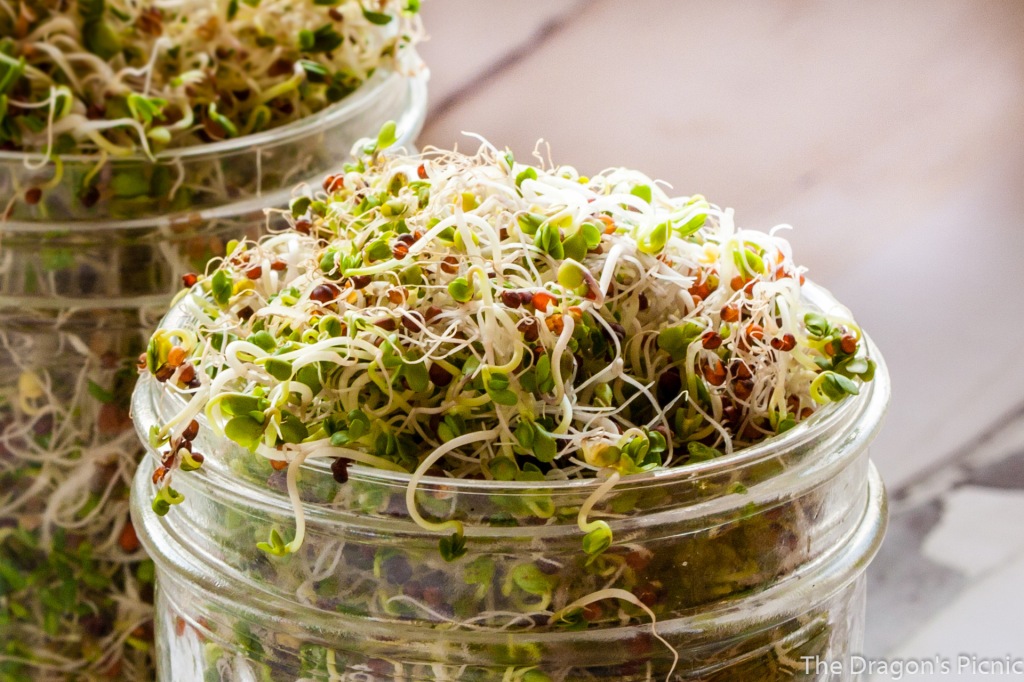Although advancements in medicine and research have made dramatic differences to health and life expectancy, acceptance of the positive role that diet and nutrition plays in health is also gaining momentum. There is little doubt as to the benefits of a diet consisting of fruit, vegetables and whole grains, however, the cost of preparing a meal from scratch – as opposed to processed foods – can be significantly higher. One relatively easy and economical way to add abundant nutrition to any diet is through sprouting.
Why Sprouting?
In a nutshell, while plants are developing, they produce increased amounts of phytochemicals and anticancer compounds so eating young plants provides the highest concentration. To boot, sprouts are tasty, nutritious and easily digestible and are a simple and inexpensive way to grow vegetables at home, in any climate and at any time of the year.

Sprout History
Although in the last 30 years there has been a surge in interest, sprouts have a long history, medicinally and nutritionally and according to the International Sprout Growers Association, “it has been written that the Ancient Chinese physicians recognized and prescribed sprouts for curing many disorders over 5,000 years ago”. In the 1700s the high Vitamin C content of sprouts made them valuable for sailors to ward off scurvy and during World War II interest in sprouts was generated with this announcement …
“Wanted! A vegetable that will grow in any climate, will rival meat in nutritive value, will mature in 3 to 5 days, may be planted any day of the year, will require neither soil nor sunshine, will rival tomatoes in Vitamin C, will be free of waste in preparation and can be cooked with little fuel.”
An apt summary of the humble sprout!

Variety of Sprouts
Sprouting falls into three categories: sprouts, shoots and microgreens. There are over 100 different types ranging from the highly nutritious broccoli sprouts which boasts between 10 to 100 times more cancer-fighting compounds than the more mature florets, the peppery kick of radish sprouts, fenugreen’s nutty, slightly sweet but mostly bitter taste and the gentle flavour and slight crunch of red clover.
How to Grow Sprouts
Although there are numerous ways to sprout ranging from a multi-tiered sprouter to a hemp bag, the method I use is wide-mouthed mason jars with a sprouting lid and a shallow bowl that allows the jar to drain while inverted at an angle. Before I purchased the sprouting lids, I simply used some cheesecloth with a rubber band.

Depending on the type of seeds used, Mumm’s Sprouting recommends adding “1-2 TBSPs of small seeds, or ¼ – ½ cup of large seeds in the jar. Rinse the seeds with water and drain. Let the seeds soak in the jar for approximately 2 hours (broccoli family), 6 hours (small seeds) or 12 hours (bigger grains or beans) in enough water to allow them to swell completely”.
I have been using the broccoli seeds or mixes of radish, alfalfa, mustard and red clover and find that 1 to 1.5 TBSPs nicely fills a 500ml mason jar when sprouted. After the initial soak, rinse the seeds a couple of times a day and place the jar away from direct sunlight, upside down and on an angle to allow the excess water to drain out and air to circulate.


After 4-5 days, leafy sprouts should be rinsed and then left upright for half a day in the light before being stored in the refrigerator for up to 10 days. During growth, some sprouts tend to clump together so they can be stirred gently with a fork. Also, if you need to remove excess moisture, you can add a piece of paper towel and store them upside down.

Closing Thoughts
There is something very satisfying about growing your own food and watching seeds sprout and flourish ready for harvesting. I now tend to have one or two on the go at any one time so there is a steady supply. In terms of serving, they can be added to a leafy green salad, used to garnish sandwiches and wraps or blended into a smoothie with fruits and vegetables.
There are so many varieties of sprouts available and it is such an easy and economical way to add flavours and textures to food while packing nutrients, fibre and protein. With sprouting, a plant-based, whole food diet never looked so good!



Very nice. Glad to see you’re back at this :)
LikeLiked by 1 person
Thank you for this excellent post!
You have me converted!
Joanna
LikeLiked by 1 person
Thanks for sharing. Will try this.
LikeLiked by 1 person
Thanks! Once you start, it is hard to stop … hope you have fun with it :)
LikeLiked by 1 person
There is so much choice with all the varieties to try, hope you enjoy :)
LikeLike
Thanks :)
LikeLike
Thanks for sharing this knowledge ❤️
LikeLiked by 1 person
You are most welcome, I hope you get to try it out :)
LikeLike
Sure🥰
LikeLiked by 1 person